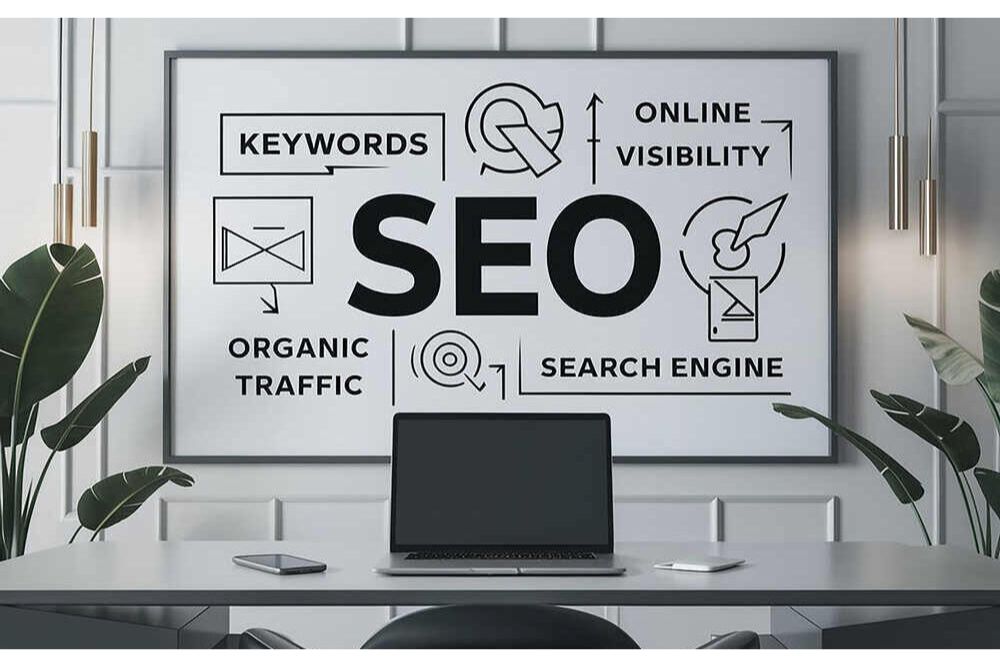The Ultimate Local SEO Checklist for Small Businesses in 2025

Local SEO isn’t just a checkbox for small businesses anymore; it’s the engine behind visibility, trust, and foot traffic. As customer journeys become more localized and AI-powered search changes how results appear, mastering local SEO means staying discoverable when it matters most. This checklist covers every must-do strategy to dominate local rankings and build community-based loyalty in 2025.
Why Local SEO Still Matters (and More Than Ever)
Local SEO isn’t simply about being “on the map.” It’s about being chosen. In 2025, local search results are dynamically customized using a mix of real-time behavior, AI-driven personalization, and hyperlocal intent. People aren’t just searching for “coffee shops near me,” they’re asking their voice assistants for the “best-reviewed espresso within walking distance that’s open now and quiet.” If you don’t show up, you don’t get picked.
Small Business Visibility and the Search Evolution
AI + Local = Precision Discovery
Search engines are now designed to anticipate intent. If someone looks for “affordable plumbing in Kansas City,” Google may display services that not only match the location and budget but also the review velocity, mobile experience, and trust indicators. This makes technical accuracy and content relevance critical.
“Near Me” Has Gone Conversational
Voice and mobile searches now dominate local intent. That means local SEO has evolved to prioritize natural language queries, proximity, and immediate availability. Optimizing your business for voice-compatible queries helps you land in those high-conversion micro-moments.
Essential Local SEO Foundations
Claim and Optimize Your Google Business Profile (GBP)
Your Google Business Profile isn’t optional; it’s your home base. Make sure to:
- Choose the right primary and secondary categories
- Add high-quality photos and videos regularly
- Keep hours, phone, and website info updated
- Use attributes like “Black-owned,” “Women-led,” or “Pet-friendly” to stand out
NAP Consistency Is Non-Negotiable
NAP is very important. Your business Name, Address, and Phone Number must match exactly across every listing, social platform, and landing page. Use local business directories with strong domain authority, and avoid low-quality aggregators that confuse Google’s crawlers.
Location-Specific Landing Pages That Convert
If you operate in multiple cities, create individual pages for each location with:
- Localized keywords
- Testimonials from area clients
- Maps and directions
- Embedded location schema
This works exceptionally well if you’re a multi-location brand like a Charleston SEO company expanding into adjacent markets.
Your Reputation = Your Ranking
Google Review Management Boosts Visibility
Google reviews directly affect your local pack placement and trust factor. Request reviews from happy customers via email or SMS follow-ups. Make it easy. Even a 4.7-star rating can outperform a perfect 5.0 if it has more volume and velocity.
Linking your request to Google review management services simplifies the entire process and helps automate responses.
Respond to Every Review—Yes, Even the Bad Ones
Thoughtful responses humanize your brand and demonstrate active engagement. A well-crafted reply to a negative review can win future customers who value transparency and service recovery.
Local Link Building Still Moves the Needle
Get Listed Where Locals Look
Top-tier citations (like Yelp and Better Business Bureau) still work, but they aren’t enough. Seek partnerships with community blogs, schools, and local news platforms. A feature in the town newsletter carries real weight with Google.
Local Sponsorships and Events
Sponsor a 5K race, a school fundraiser, or the city’s farmers’ market. Then make sure your participation shows up in event listings and digital press coverage. Those backlinks matter.
Mobile-First Isn’t a Strategy—It’s the Standard
Mobile = Local
In 2025, 50-70% of local searches are mobile, many conducted within 5 miles of the searcher. Mobile design isn’t just about responsiveness; it’s about functionality. Can someone call, navigate, or book an appointment from your site in one tap?
Core Web Vitals for Small Businesses
Google continues prioritizing page experience. Use tools like PageSpeed Insights to optimize for:
- LCP (Largest Contentful Paint): Should load in under 2.5 seconds
- CLS (Cumulative Layout Shift): Minimize layout movement
- FID (First Input Delay): Ensure interactivity starts fast
Personalization Is the Secret Weapon
Dynamic Local Content
Using AI-driven tools, small businesses can now deliver personalized landing pages, FAQs, or product suggestions based on location, time, or behavior. For example, a Buffalo bakery might highlight hot chocolate specials in January but iced lattes in July via Buffalo SEO agency strategies.
Use First-Party Data Wisely
Create opt-in opportunities, such as quizzes, events, and loyalty cards. These data points fuel segmented email marketing and personalized retargeting that align perfectly with local SEO.
Get Social, Stay Local
Leverage Social Proof
Embedding real customer content like photos, videos, and testimonials on your site boosts rankings and builds trust. Tools like Yotpo or Taggbox can help you do this seamlessly.
Community Engagement Drives Authority
Instead of generic blog posts, highlight neighborhood wins: employee of the month, local charity drives, or customer shoutouts. These stories are more likely to be shared and linked locally.
Voice Search Is Here (and It’s Local)
Optimize for Spoken Queries
Most voice searches are question-based. Build pages with natural-language phrases like:
- “Where can I find gluten-free pizza in Oklahoma City?”
- “Best family dentist near me open now”
Use structured data to help Google parse the answers clearly.
Technical SEO Still Matters
Use Local Schema
Add structured data to each page:
- Local Business for your homepage
- Product or Service for key offerings
- FAQ for top questions
- Validate with Google’s Rich Results tool.
Maintain a Crawl-Friendly Site
No matter how beautiful your website is, if it’s not crawlable, it won’t rank. Create an XML sitemap. Update your robots.txt. Use canonical tags correctly. These basics are often neglected but make a difference.
Benchmarking Your Local SEO Performance
Spy on Your Competitors—Ethically
Track your competitors’ backlink profiles, GBP updates, and top-performing keywords using tools like BrightLocal and Semrush. Identify gaps and fill them more effectively.
Do a Local SEO Audit Every Quarter
Your checklist should include:
- GBP updates and insights review
- NAP consistency re-check
- Review score tracking
- Page speed and UX testing
- Link and citation audit
Multi-Location SEO? Centralized but Localized
If you’re running five storefronts across the Midwest, don’t clone the same page five times. Use a centralized strategy with decentralized storytelling. Let each location manager submit local photos, deals, and testimonials that reflect their neighborhood.
An Oklahoma City SEO company might use localized landing pages to reach different boroughs with tailored offers and CTAs.
Emerging Local SEO Trends Worth Watching
Zero-Click SERPs Are the New Battleground
Not every search ends in a click. Your information must be present in the Local Pack, FAQs, and knowledge panels. That means optimizing headlines, metadata, and even favicon icons.
Predictive Targeting and AI Campaigns
Using tools like Jasper, Phrasee, or HubSpot’s innovative content features, businesses can deploy email and ad campaigns based on behavioral triggers that sync with local search timing, like promoting cold-weather gear before the first snow.
Tools to Put in Your 2025 Local SEO Stack
| Tool | Purpose | Ideal For |
|---|---|---|
| Google Business Manager | Profile optimization | All SMBs |
| BrightLocal | Citation tracking | Multi-location brands |
| Yext | Directory listings | Local consistency |
| ReviewTrackers | Review management | Service businesses |
| Ahrefs / Semrush | SEO audits & rank tracking | Advanced marketers |
2025 Local SEO Checklist (Quickfire Recap)
- Claim and optimize your GBP
- Keep NAP consistent everywhere
- Create localized landing pages
- Earn and respond to reviews
- Build local backlinks
- Prioritize mobile performance
- Use schema markup
- Optimize for voice
- Personalize your content
- Benchmark and audit quarterly
Final Thoughts: Why Local SEO Is Your Smartest Investment
While global marketing gets flashier, it’s the local wins that drive daily revenue. Visibility in your city, your neighborhood, your block—that’s where the conversions happen. And the businesses that treat local SEO as a living, breathing strategy, not a one-and-done task, are the ones who will dominate in 2025.
If you’re ready to level up your local visibility, working with the right partner can help. Whether you’re looking for a St. Louis SEO company or building your brand across multiple cities, there’s no better time to start than now.

 11 min read
11 min read










